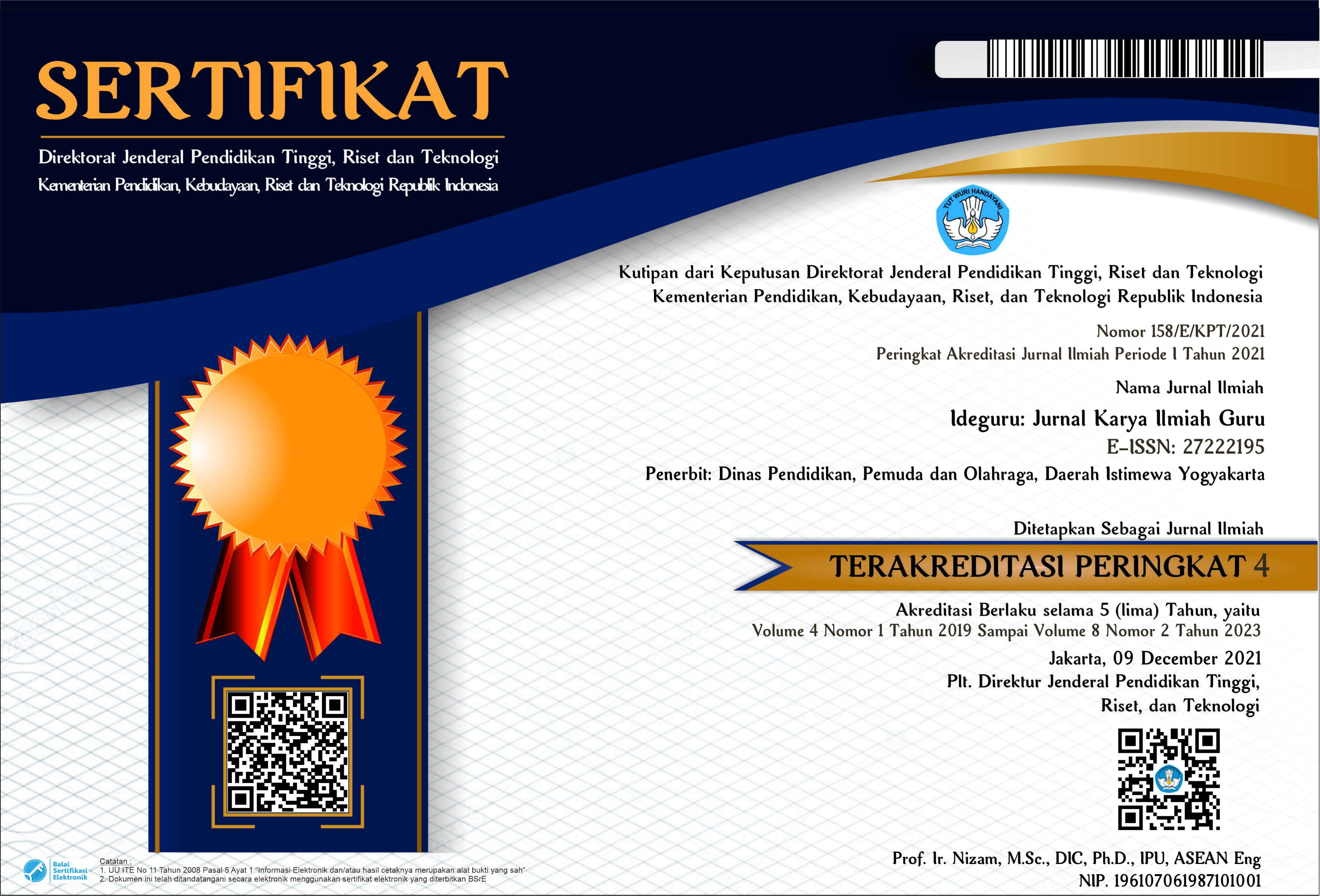Improving Learning Achievement in Normal Distribution through Cooperative Learning Model of Jigsaw Type
Abstract
The purpose of this Classroom Action Research is to know how the teaching and learning activity of cooperative learning model of Jigsaw to increase the students’ learning achievement at lesson material of normal distribution at XII MIPA 1 SMAN 1 Bantul in academic year 2019/2020 that applies Semester Credit System. This research was done in January–March 2019 with the students of XII MIPA 1 SMAN 1 Bantul as the subject of the research. This Classroom Action Research was done in two cycles, every cycle was carried out in some steps namely planning, implementation of the action, observation, and reflection. The data were collected by using observation sheets to know how effective and successful the teaching and learning activity was, and the tests were used to measure the students’ learning achievement. After the data were collected, they were analyzed to know the success of this Classroom Action Research. This research will be successful if it fulfills the following indicators: 1) minimum learning mastery standard and the average value ; 2) score of teacher’s performance is categorized very good. The result of the Classroom Action Research shows that the teaching and learning activity by using Cooperative Learning Model of Jigsaw can: 1) increase the success and effectiveness of teacher in teaching, indicated by its increasing score from 71.4 (good) to be 92.9 (very good); 2) increase the number of the students who pass the minimum learning mastery standard and the students’ learning achievement, indicated by the increasing number of students in class who pass class minimum learning mastery standard from 78.78% to 93.93% and the increasing scores of students in general from 81.09 to 91.15.
PDF Downloads
Copyright (c) 2021 Muchayat

This work is licensed under a Creative Commons Attribution 4.0 International License.

 DOI:
DOI:














